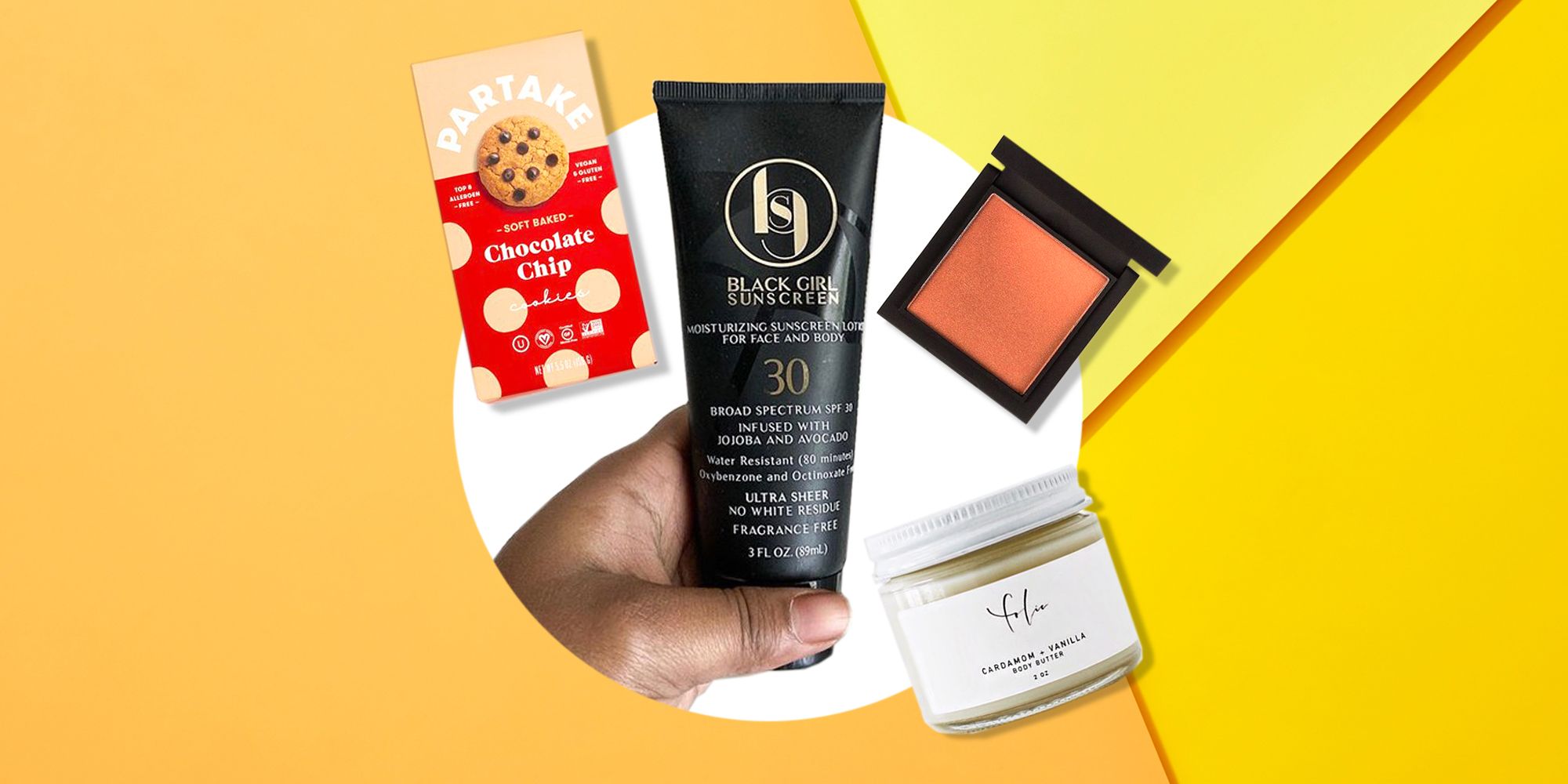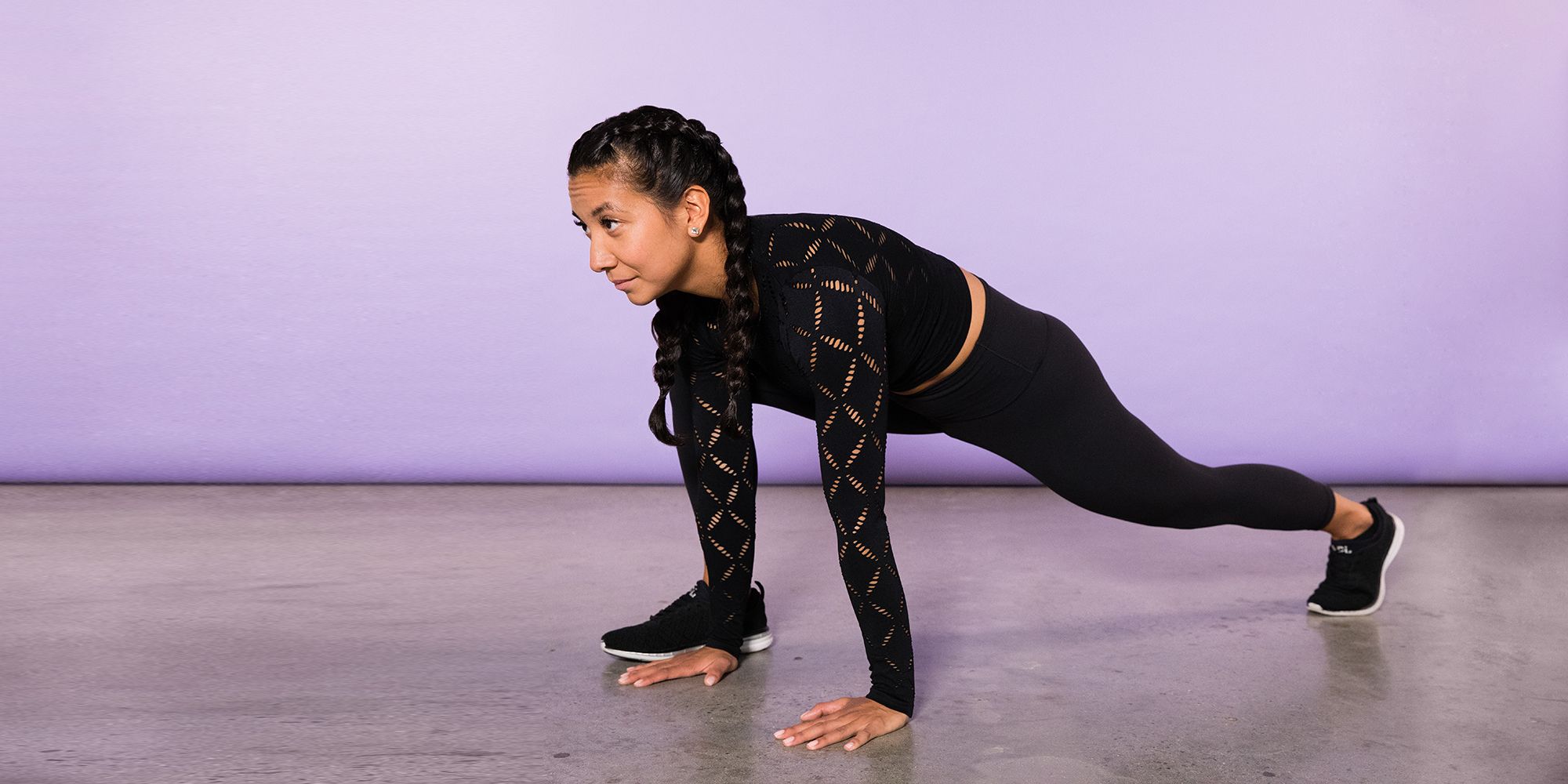14 Ways To Lose Thigh Fat And Tone Your Legs
Let’s get something out of the way first: The idea of spot-reducing, or losing fat from specific parts of your body, is a myth. So there’s nothing you can do to spot-reduce fat on your thighs or legs in general, TBH.
That’s because losing fat happens all over as you lose weight, and you don’t have control over where or when it happens first. “You can reduce your overall body fat by eating healthy and exercising, but your body doesn’t know where it’s burning fat,” says Lisa Moskovitz, RD, CEO of NY Nutrition Group. “Wherever there’s fat on your body, it will come off. And we have fat all over our bodies.” Also, for women, fat tends to accumulate in the thigh area more than for men, research has shown.
Personal trainer Ben Lauder-Dykes, CPT, agrees, adding that losing fat (in general) comes down to creating a calorie deficit for weight loss. And as you lose fat, you can strengthen and shape your body and build muscle in a particular area you desire via exercise.
I know, not exactly what you want to hear (there are no shortcuts, sry!). But there are a few steps you can take to reduce bloat and inflammation and tone your legs while losing weight all over. Here are a few key habits to consider.
1. Watch your salt intake.
Salt makes your body retain excess water, and that causes bloat that can affect your whole body, hips and thighs included. “Water follows salt, so the more you eat, the more water gets stored instead of being filtered out by your kidneys,” says Moskovitz. “By cutting back, you’ll notice almost an immediate change in how you feel and how your clothes fit.”

Per the American Heart Association’s recommendations, most people need 1,500 milligrams of sodium per day (the upper limit is 2,300 milligrams)—but many of us are getting way more than that. Cut back by limiting processed foods, like sauces, canned veggies, and soups, which are often loaded with sodium.
2. Add more electrolytes into your diet.
You’ve seen them in sports drinks, but electrolytes like calcium, magnesium, and potassium are plentiful in many healthy foods that might already be in your diet.
All of them—and potassium, in particular—compete with salt. “The more [electrolytes] that you have, the less salt your body will retain,” says Moskovitz. “It helps keep the fluid balance stable, so your body flushes out water retention.”
Dark leafy greens, yogurt, and bananas are excellent sources of various types of electrolytes. Moskovitz says everyone should aim for nine servings of fruits and veggies every day: two to three half-cup servings of fruit, and the rest veggies (one cup raw or one-half cup cooked).
3. Cut back on carbs.
When your body transforms carbs into glycogen, they’re stored along with water in your liver and muscle. That means the more carbs you eat, the more water your body stores. “That’s why a lot of people find they lose a few pounds immediately on a low-carb diet. A lot of that is water weight,” says Moskovitz.
She suggests getting a minimum of 75 to 100 grams of carbs per day, although some people might need quite a bit more depending on their height, weight, and activity level.
Just don’t skip whole grains altogether, since they’re an excellent source of filling, heart-healthy fiber as well as folate, iron, magnesium, antioxidants, and phytonutrients. If you’re not sure of your carb sweet spot, check with a nutritionist.
4. Start your morning with a cup of coffee.
Coffee has a very mild diuretic effect and may stimulate your metabolism, your body’s fat-burning ability, and your workouts. That said, there is such a thing as too much coffee. “It can lead to crashes that contribute to overeating at night and generally not feeling great,” says Moskovitz. She suggests sticking to two cups per day max.
5. Carry a water bottle around with you.
It seems counterintuitive, but the less water you drink, the more your body holds onto it. Drinking plenty of water flushes out the excess salt and fluids your body doesn’t need, reducing bloating.
It also helps curb your appetite, since dehydration mimics hunger. Moskovitz suggests aiming for two to three liters per day—on the higher end if you’re exercising or it’s hot outside.
6. Skip the cocktails.
A few drinks can sneakily add a whole lotta calories to your daily intake. Whether you go for light beer or a mixed drink, they can easily add up to at least 100 to 110 calories per beverage, according to the U.S. National Library of Medicine.
The foods you choose to eat while under the influence aren’t usually optimal either. In fact, a study from the journal Appetite found that moderate drinkers were 24 percent more likely to order something savory like salty fries, which may be the only edible item at your local dive bar, after drinking. And it’s not just the quality of food that affects your weight but the quantity you’re taking in, especially if you didn’t start off the evening with a hearty meal.
So, limiting how much and how often you consume booze can help with any weight loss goals you might have.
7. Add some cardio into your schedule.
Aerobic exercise is another way to flush out excess salt and fluids, says Moskowitz. What’s more, any activity that gets your heart rate up is also your best bet to spend calories and burn body fat—including on your hips and thighs. The higher your calorie burn, the bigger calorie deficit you can create, and the more likely you are to lose weight—and reduce fat all over.
Just remember: You have to stay hydrated. Aim to drink 16 to 20 ounces more water per hour of intense exercise and eat extra foods with electrolytes if you’re crushing it at the gym for more than an hour.
8. Try tracking your meals.
Keeping a daily record of every food you eat helps you stay on track and accountable when you’re trying to shed body fat. Moskovitz likes the app MyFitnessPal, since it’s easy to use and has estimates for most foods (but plain old pen-and-paper works fine, too).
Keeping tabs on your diet also means planning your meals ahead of time as often as possible. “Life gets in the way and it’s hard to stay on track, so having your meals planned out helps for sure,” says Moskovitz.
9. Eat more fiber and protein.
Pack every meal with fiber and protein to boost weight loss, since both macronutrients help keep you fuller on fewer calories.
Protein, in particular, is essential for building the lean muscle that will make your legs look great. Moskovitz suggests trying for a total of 25 to 35 grams of fiber and 75 to 100 grams of protein per day from veggies, fruits, whole grains, and lean meats.
10. Train and strengthen your thighs.
While you can’t spot-reduce thigh fat, you can spot-train your muscles so they’re strong.
Target your thighs all over by doing curtsy lunges, sumo squats, and goblet squats. Focus on your inner and outer thighs with lateral lunges and band leg side raises; and hit your hamstrings with deadlifts, reverse leg curls, and bridges with hamstring curls.
Choose your favorite exercises from each group and complete each for eight to 12 reps at your maximum weight for a total of three to four sets. Ideally, try for two days of leg workouts each week, mixing multi-muscle compound movements (think squats and lunges) with more targeted exercises (like bridges and hamstring curls).
11. Do squats one day and lunges the next.
Yes, you can work your thighs to build muscle and strength, but you don’t want to do the same exercises all. the. time.
Lauder-Dykes, who is a strength and conditioning coach and trainer at Fhitting Room, a high-intensity training studio in New York City, says the most important thing to do is switch up your moves. “Different exercises can challenge a muscle group in a different way,” he says.
Some examples: Add front squats to your routine and you target your quads, while back squats work your glutes and hamstrings more. Focus on single-leg movements (like lunges and split squats) and your stability muscles, including your inner and outer thighs, will fire up to keep you steady, Lauder-Dykes says.
12. Don’t forget about HIIT exercises.
To get more bang for your buck in a shorter amount of time, combine strength training and weight lifting with HIIT, says Lauder-Dykes—it’ll help you burn extra calories and create a calorie deficit, which is required to lose fat, he adds.

“This also helps to increase energy burned at rest and better performance, so you can go at higher efforts and intensities, and be able to sustain it for a longer period of time.” That blend of strength and interval work leads to an even higher calorie burn—without actually having to work out more.
13. Find ways to relax and recover.
Stress can cause your body to produce hormones like cortisol, which cause the body to store fat, Angela Fitch, MD, vice president of the Obesity Medicine Association, associate director of the Massachusetts General Hospital Weight Center, and faculty at Harvard Medical School, previously told WH. Look, you can’t get rid of stress completely, but you should find your own personal methods to help minimize it.
Need some ideas? Try scheduling time away from work and/or your phone, going for a walk, practicing meditation, and enjoying some self-care, like reading, getting a massage, or talking to a friend who helps you chill out.
14. Make sleep a priority.
Not getting enough sleep can trigger you to make unhealthy food choices, says Dr. Fitch, who recommends getting at least seven and a half hours a night. “When you don’t sleep well you increase your appetite. The next day you are hungrier, and usually, for carbohydrates and fat,” she previously told WH. “When you are tired your body wants to eat processed carbohydrates and sugar to stay awake.”
Going through a full sleep cycle every night also promotes calorie-burning (win!). “REM sleep burns a lot of calories,” Dr. Fitch says. “When you don’t sleep well you store more energy as fat as you become more insulin resistant and these higher insulin levels promote fat storage.” If you have trouble falling asleep, these tips can help you out.
Source: Read Full Article


